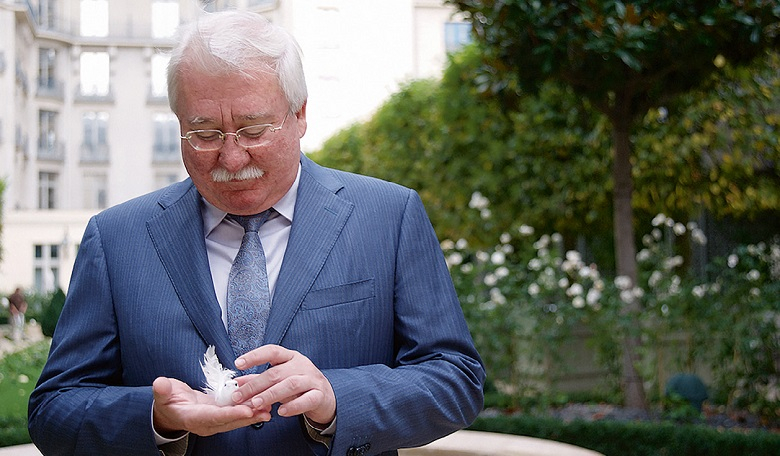Dr Igor Ashurbeyli, the founder and Head of Asgardia the Space Nation, turned 60 years old on 9 September 2023. For many, such a milestone is often used to reflect on a life lived but for Dr Ashurbeyli life is forward-looking and a continuous process of creation. The experience, benefits and opportunities gained over six decades are the tools he actively uses to create an image of the future and what can be achieved. To mark this milestone birthday we look at some of the influences that have shaped a remarkable scientist, entrepreneur and philanthropist, who is also publisher of ROOM Space Journal of Asgardia.
Igor Ashurbeyli was educated in music as a child and was good at drawing and writing poetry, leading many to think he was destined for an artistic career. He considered becoming a writer or journalist and was offered a position in the editorial office of a newspaper in his hometown of Baku, Azerbaijan. Turning down the opportunity was an expression of his strongly held view against the requirement for journalists to adhere to strict editorial policies.
He obtained a university degree in systems engineering, engaging himself with information technology, which was not widely popular back in 1985 and, in the opinion of many, a career unrelated to creativity.
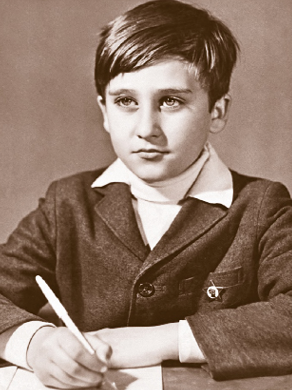 The future founder of Asgardia as a child.
The future founder of Asgardia as a child.
In media interviews today, Dr Ashurbeyli often uses the phrase, “I am a systems engineer”, to emphasise the fact that his way of thinking in business is shaped in a systematic and realistic way. He has an enviable reputation for successfully bringing ideas to life, no matter how unrealistic and hard to implement it may seem initially.
As a young entrepreneur, Igor Ashurbeyli founded his own company, Socium, on 10 June 1988, which now encompasses manufacturing, IT, banking, real estate, agriculture, energy, creative and intellectual activities, and the development of society as a whole and the individual in particular. His socially significant projects include mass media and publishing.
In Dr Ashurbeyli’s opinion it is possible to turn life itself into creativity, bringing together caring and gifted people, and generously sharing what you have and know.
Creativity, an antonym of destruction, is even more vividly expressed through charity. A true creator cannot tolerate emptiness so, instead of a ruined school building a new community centre appears, and the ruins of a church in a lost village, in the home area of maternal ancestors, is transformed into a majestic baroque building that soars to the heavens.
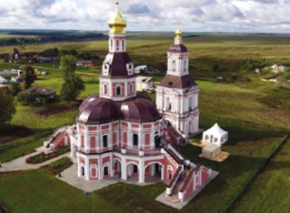 One of the churches restored by Dr Igor Ashurbeyli.
One of the churches restored by Dr Igor Ashurbeyli.
One of Dr Ashurbeyli’s many gifts is that of intuition. The ability to put pieces of a puzzle together, to bring to the fore inner thoughts and and what might be obvious to only a few people. This is how one becomes a visionary.
His ancestors include the family of the famous Persian commander Ashur-khan and, on his father’s side, the Azerbaijani descendants of the Persian Defence Minister and the Ashurbekov family, aristocrats and oil producers who were generous philanthropists. Charity is therefore in his blood and church restoration is one of the many components of this heredity.
It can be said that the Universe does not recognise boundaries and it is universally accepted that a truly creative person often feels cramped within the framework of ‘terrestrial’ formalities and bureaucracy. Except, perhaps, for the ethical ones, which are outlined in God’s commandments. Perhaps this is why Dr Ashurbeyli is a man of the Universe and why Asgardia the Space Nation has so many supporters - more than a million planet Earth residents.
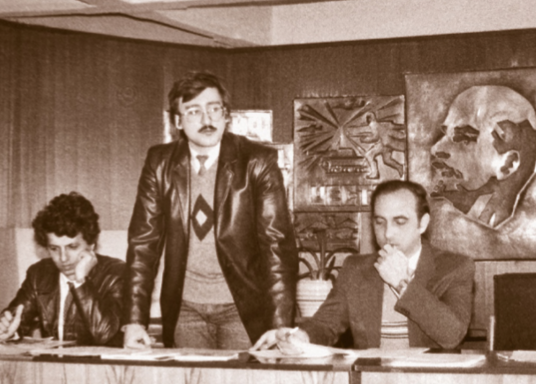 Igor Ashurbeyli chairing a meeting of the Association of Scientific and Industrial-Technical Enterprises of Azerbaijan ASITEA which he headed.
Igor Ashurbeyli chairing a meeting of the Association of Scientific and Industrial-Technical Enterprises of Azerbaijan ASITEA which he headed.
Humankind has always dreamed of the stars and the often cited quote from the pioneering rocket scientist Konstantin Tsiolkovsky, “Earth is the cradle of humankind, but humankind cannot stay in the cradle forever”, could easily be viewed as a foundational tenet of Asgardia.
As will be familiar to readers of ROOM, Asgardia has long-term practical goals: to bring space science to a new level, to develop technologies of artificial gravity, protection from space radiation and to provide conditions for the birth of the first child in space, all working to ensure the continuity of the human species even in the event of a disaster on our home planet.
But the Asgardia philosophy is much deeper than a list of practical objectives. Aligned with the philosophies of Dr Ashurbeyli, the Space Nation is designed to create a new society willing to expand its consciousness and to go beyond terrestrial boundaries and stereotypes. A society in which individual maturity, the pursuit of freedom and knowledge, and the conscious responsibility of everyone opens up opportunities for universal prosperity that have long seemed to be utopian. In reality, this represents a transition of civilisation to a new level cognisant with a future in space.
Back in the day, Dr Ashurbeyli chose a motto for Socium, his international holding company. It captures a concept extolled in Hermetic and alchemical teachings, and translates into English as, ‘Great in small, small in great’.
On an individual level, this might be interpreted as ‘one is both a part of the universe and the universe itself’, suggesting inner personal connections to the wisdom, knowledge, justice and freedom inherent in the universe. By recognising and understanding this, individuals can seek answers to questions within themselves and achieve a level of maturity that is essential for the fulfilment of human dreams.
In July 2014, as a precursor to the formation of Asgardia, Dr Ashurbeyli launched the international space magazine ROOM Space Journal which quickly became a respected publication in the field through authoritative content and innovative presentation. The magazine is also well-known for its eye-catching and thought-provoking covers which creatively mix elements of life on Earth with space.
The name ROOM is both a play on one of its synonyms (space) and a symbol of shared space - shared by spaceflight designers, engineers, industry managers, scientists, space leaders and renowned universities - for the purposes of airing opinions, creating community and promoting discussion.
In 2019, the magazine became ROOM Space Journal of Asgardia and since then has continued its mission to enhance credibility among the global space community, providing an influential publishing outlet in the space industry and reflecting the interests of Asgardia.
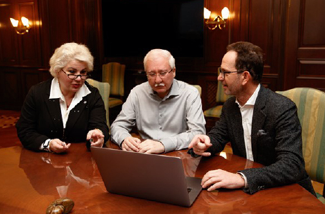 Meeting with the Asgardian Prime Minister Lena De Winne and the Minister of Science Floris Wuyts.
Meeting with the Asgardian Prime Minister Lena De Winne and the Minister of Science Floris Wuyts.
About the author
Clive Simpson Editor-in-Chief





